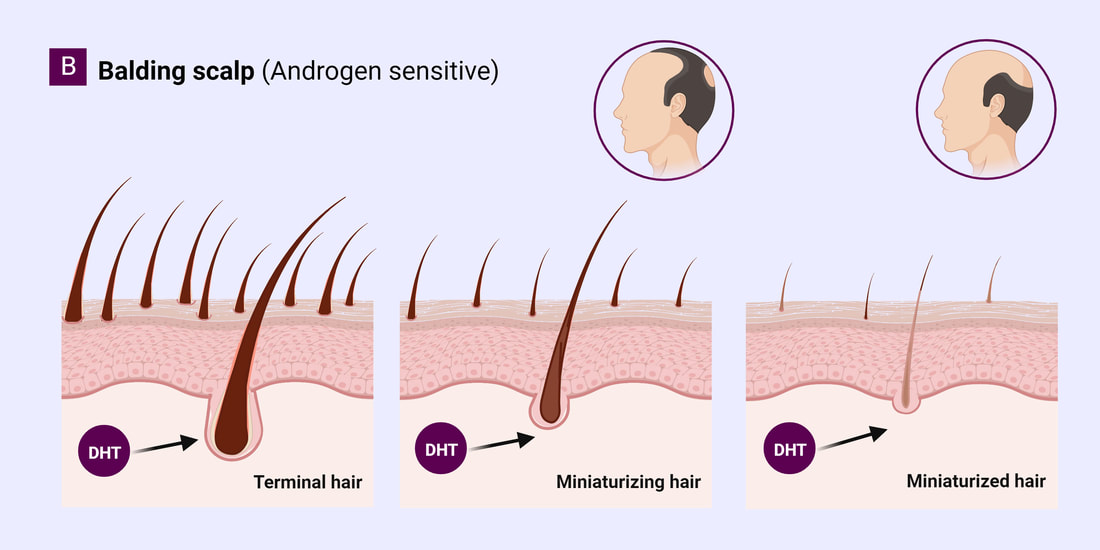Did you know that nearly half of all men and 15% of women worldwide are affected by Androgenetic Alopecia (AGA)? |
ADA-308 for androgenetic alopecia
Androgenetic alopecia (AGA)
Androgenetic alopecia is the most common type of hair loss among both men and women. It has a distinctive pattern of progression. In men, hair is typically lost in a well-defined, M-shaped pattern beginning above both temples and expanding to the crown, thus, it is also called male pattern hair loss, MPHL. In women hair loss has a different pattern as it begins with gradual thinning from the part line towards the sites and is called female pattern hair loss, FPHL. While complete hair loss (balding) may result in men with the condition, it is rare in women. Androgenetic alopecia has a negative impact on the patient's quality of life, mental health, and self-esteem.
AGA and its connection to androgens
Androgenetic alopecia patients experience changes to the normal hair cycle. The three phases of the hair growth cycle are as follows: 1) the growth phase, anagen, which lasts 2–6 years and is marked by the lengthening of the hair; 2) the transition phase, catagen, which lasts 2-3 weeks and is marked by the regeneration of the hair follicle; and 3) the resting phase, telogen, which lasts 2–3 months and is marked by the loss of hair and the start of a new hair growth cycle.
For both men and women, hair loss begins when the balance in the hair growth cycle shifts toward the resting phase and the growth phase is so brief that the hair does not reach the scalp surface. DHT in particular, an androgen, plays a role in the progression of hair loss. People with androgenetic alopecia have highly sensitive hair follicles, which over time cause miniaturization of the hair follicles and progressive hair loss (see illustration below).
Treatment options
Minoxidil and finasteride are the two approved and widely used medications for the treatment of AGA. Topical minoxidil is a non-specific targeted therapy for androgenetic alopecia with an unknown mode of action.
The only androgen-targeting treatment for androgenetic alopecia is finasteride 1 mg, an oral 5-alpha-reductase inhibitor that promotes hair growth by systemically inhibiting the synthesis of DHT. The use of oral finasteride is hindered by potential adverse sexual side effects such as decreased libido, erectile dysfunction, and ejaculatory dysfunction. Although rare (2-5%) particularly younger patients consider the risk (of sexual side effects) too high.
None of the medical treatments reverses AGA in its advanced stage, but progression can be arrested and partly reversed in most patients with mild to moderate hair loss. Notably, medical care must be maintained forever because hair loss returns if it is discontinued.
Systemic vs. locally acting anti-androgens for AGA treatment
An increased risk of depression has been linked to systemic hormonal therapy that suppresses androgen activity. This emphasizes, even more, the necessity of limiting an antiandrogen's systemic exposure. In support of the topical approach, a recent study showed that topical finasteride spray solution was just as effective as oral finasteride administration, but with significantly less systemic exposure and (somewhat) less of an effect on serum DHT concentrations than oral dosing (Piraccini et al., 2021).





